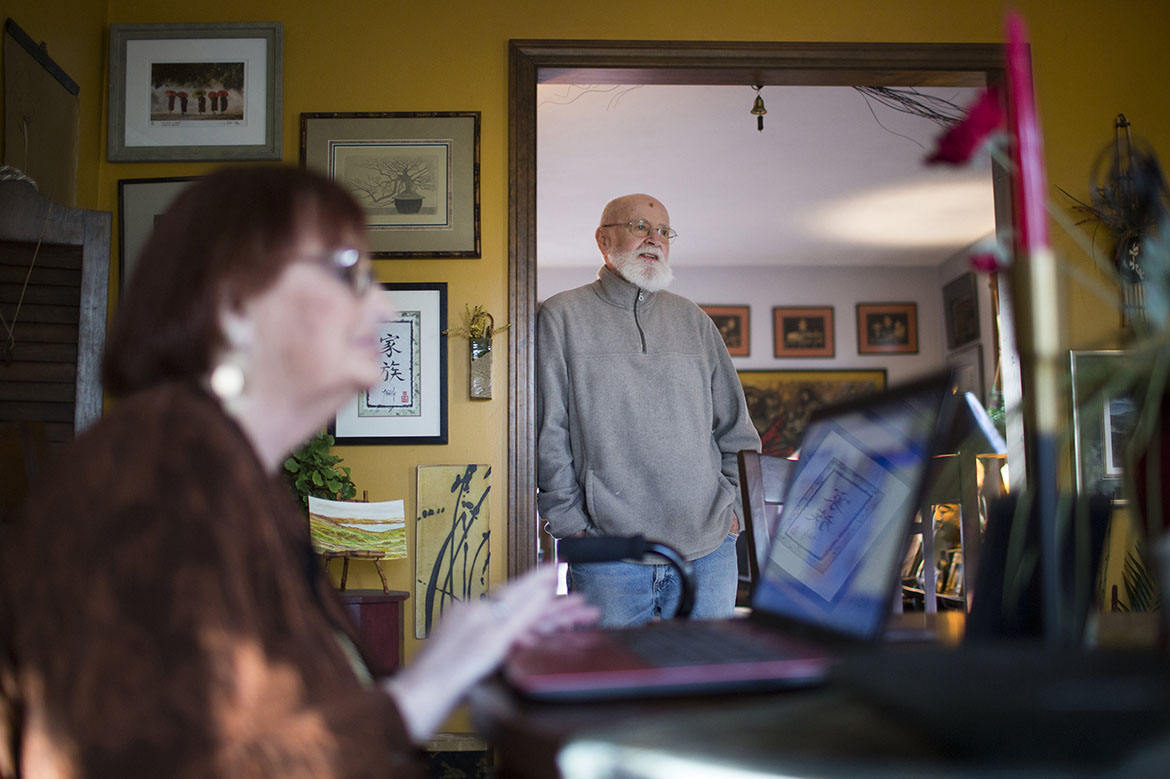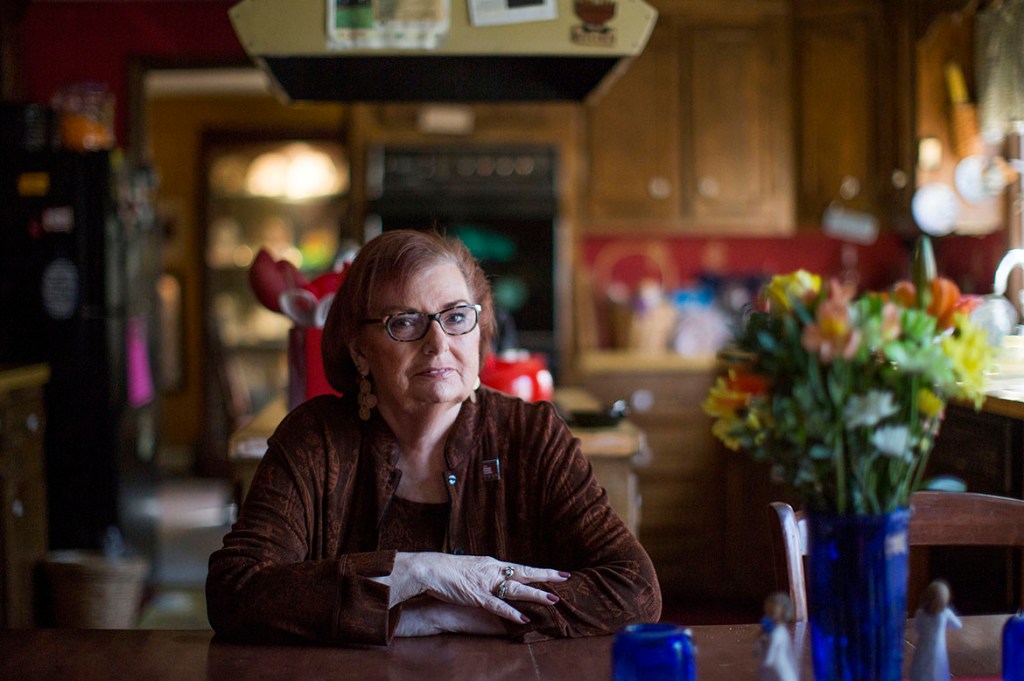Marlene McCarthy’s breast cancer has grown relentlessly over the past seven years, spreading painfully through her bones and making it impossible to walk without a cane.
Although the 73-year-old knows there’s no cure for her disease, she wants researchers to do better. It’s been years, she said, since she has found a drug that has actually helped. McCarthy said she’s frustrated that the Food and Drug Administration is approving cancer drugs without proof that they cure patients or help them live longer.
“That simply isn’t good enough,” said McCarthy, of Coventry, R.I. “I understand [why] that could be satisfactory for some people. It isn’t to me.”
Pushed by patient advocates who want earlier access to medications, the FDA has approved a flurry of oncology drugs in recent years, giving some people with cancer a renewed sense of hope and an array of expensive new options. A few of these drugs have been clear home runs, allowing patients with limited life expectancies to live for years.
Many more drugs, however, have offered patients only marginal benefits, with no evidence that they improve survival or quality of life, said Dr. Vinay Prasad, assistant professor of medicine at the Oregon Health and Science University, who has written extensively about the FDA’s approval process for cancer drugs.
Overall cancer survival has barely changed over the past decade. The 72 cancer therapies approved from 2002 to 2014 gave patients only 2.1 more months of life than older drugs, according to a study in JAMA Otolaryngology–Head & Neck Surgery.
And those are the successes.
Two-thirds of cancer drugs approved in the past two years have no evidence showing that they extend survival at all, Prasad said.
The result: For every cancer patient who wins the lottery, there are many others who get little to no benefit from the latest drugs.
“We are very concerned about the push to get more drugs approved, instead of effective drugs approved,” said Fran Visco, president of the National Breast Cancer Coalition, who said the last game-changing breast cancer drug, Herceptin, was approved nearly 20 years ago.
In a November study published in JAMA Internal Medicine, researcher Diana Zuckerman looked at 18 approved cancer drugs that didn’t help patients live longer. Only one had clear data showing that it improved patients’ lives, such as by relieving pain or fatigue.
Two drugs harmed quality of life. For example, thyroid cancer patients taking the most expensive drug, cabozantinib, scored worse on a scale measuring five symptoms: diarrhea, fatigue, sleep disturbance, distress, and difficulty remembering, Zuckerman said.
“Our patients need drugs that provide the greatest possible benefit, particularly when you put that in the context of cost,” said Dr. Richard Schilsky, senior vice president and chief medical officer at the American Society of Clinical Oncology, which represents cancer specialists. “You begin to question what is the real value of a therapy when the benefit is small, the toxicity may be similar to a previous drug and the cost is much higher.”
Cancer drugs approved last year cost an average of $171,000 a year, according to the Center for Health Policy and Outcomes at New York’s Memorial Sloan Kettering Cancer Center. Although the high prices can lead patients to think they’re getting the Mercedes of cancer drugs, research shows that a medication’s price has no relationship to how well it works.
“We cannot have a system where drugs that may not even work are being sold for these amazingly crazy amounts of money,” said Zuckerman, president of the National Center for Health Research, a nonprofit in Washington that aims to explain research to consumers.
Recognizing the slow pace of progress, the American Society of Clinical Oncology has set goals for new cancer drugs of extending life or controlling tumors for at least 2.5 months. The bar was set relatively low because “it’s not very often that we come across a transformative treatment,” said Dr. Sham Mailankody, an assistant attending physician and myeloma specialist at Memorial Sloan Kettering.
Yet in a study published in September in JAMA Oncology, Mailankody found that only one in five cancer drugs approved from 2014 to 2016 met those standards.
Even those slim gains, achieved during carefully controlled clinical trials, can evaporate in the real world, where patients are often older and sicker than those who participate in research studies, said Hanna Sanoff, an associate professor and section chief of the University of North Carolina School of Medicine Gastrointestinal Medical Oncology Program.
Cancer is primarily a disease of aging; 59 percent of patients are over 65 and 30 percent are older than 75. Yet only 33 percent of participants in cancer trials are over age 65 and just 10 percent are over 75, according to a 2012 study in the Journal of Clinical Oncology.
In a study published in September in The Oncologist, Sanoff found that a drug that improved survival in liver cancer by three months offered no survival advantage among Medicare patients outside the clinical trial.
McCarthy, who reviews breast cancer research proposals for the Department of Defense, said she was twice turned down for clinical trials because of her age. When researching experimental therapies, “I’d get excited by something that seemed promising, only to be told I was too old to join the trial, because the cutoff age was 70,” she said.

McCarthy works on a computer as her husband, Joe, looks on. McCarthy, a mother of four, was first diagnosed with breast cancer at 44. Seven years ago, the disease returned in her bones, a condition that is not curable. (Katye Brier for KHN)
Lowering The Bar
FDA officials said there are good reasons why many promising cancer drugs lack evidence of improved survival.
Because some cancers grow slowly, it can take many years for a study to show whether a new drug helps people live longer, said Dr. Richard Pazdur, director of the FDA’s Oncology Center of Excellence. While individual drugs may only modestly improve survival, “when used sequentially or in combination, they can transform a disease,” Pazdur said.
The design of some cancer trials also can make it hard to tell if drugs help patients live longer. That’s because many trials now allow patients in the control group the opportunity to “cross over” to get the drug being studied, if preliminary data suggests it could help them, Pazdur said. While such crossover benefits people in the study, who are facing a life-threatening disease, it can lead to inconclusive findings.
Lastly, Pazdur said that overall survival rates also don’t reflect the fact that some drugs, such as targeted therapies for lung cancer, allow a subset of patients to do extremely well, surviving for years instead of months.
The number of patients with advanced melanoma who survive five years after diagnosis has increased from 5 percent before the advent of immune therapies to 30 percent to 40 percent today, said Dr. Steven O’Day, director of immuno-oncology and clinical research at the John Wayne Cancer Institute at Providence Saint John’s Health Center in Santa Monica, Calif. Immune therapies work by stimulating a patient’s natural immune system to combat cancer cells.
“There is a lot of excitement about these [immunotherapy] drugs, and for good reason,” Schilsky said. “There’s no diminishing the progress that’s been made.”
The FDA wants to give patients the chance to benefit as soon as possible, rather than waiting for definitive proof of improved survival, Pazdur said. In some cases, the FDA requires pharmaceutical companies to perform long-term studies after drugs are approved, to measure whether drugs live up to their early promise.
But many of these studies never provide an answer, Zuckerman said. Once a drug is approved and is available to anyone, patients have no incentive to participate in a clinical trial. So studies can end with no clear conclusion.
In a 2015 study, Prasad looked at 36 drugs approved without proven survival advantages. More than four years later, only five had evidence of improved survival.
Otis Brawley, chief medical officer at the American Cancer Society, said he’s concerned that the FDA is lowering its standards.
“We’re getting less rigorous scientifically because we want to get these drugs out to people faster,” Brawley said.
Unless the FDA requires companies to provide survival data before approving a drug, “we may never have answers,” Zuckerman said. “We will have all of these expensive drugs on the market and we will never have the information we need about how well they work or even how safe they are.”
President Donald Trump has vowed to cut regulations at the FDA and recently told pharmaceutical industry leaders that he wants to further speed up the drug approval process.
Helpful Or Harmful?
Cancer patients, who are making decisions at a time of intense stress, don’t always understand the full risks and benefits of therapy, Brawley said. Studies suggest that both patients and doctors tend to overestimate drugs’ benefits, but underestimate their risks and side effects.
A study of 2,944 people in JAMA Internal Medicine found that 39 percent mistakenly believed the FDA only approves “extremely effective” drugs, while 25 percent mistakenly believed the agency only approves treatments without serious side effects.
Even doctors think “we are better than I actually think we are,” Brawley said. “The thought that these drugs could be harmful is foreign to them.”
Patients “see the survival benefit, and of course these are scared, desperate people trying to get themselves any chance they can get,” said Dr. Ellyn Lee, who guides patients about cancer treatments as director of Seattle’s Swedish Palliative Care Services. “However, the survival benefit is not often realized, or it’s three months of misery due to side effects and bankruptcy at the end. Is that really fair?”
One of the biggest recent changes at the FDA is that more drugs are being approved based on “progression-free survival” — medical jargon for the amount of time that patients live while their tumors are under control.
Because small changes in tumor size aren’t always clearly visible on scans, doctors consider tumors to be under control as long as they don’t grow more than 20 percent, Brawley said.
Doctors always hope that a drug that delays tumor growth will help patients live longer. But in a study published in 2015, Prasad found that most statistical analyses have found the link between progression-free survival and overall survival to be very weak.
Measures such as progression-free survival “are just a guess as to whether or not the drug actually works,” Brawley said. “The problem with approving a drug based on a progression-free survival is that you don’t know if the drug is actually doing anything positive for the patient.”
Brawley said he’s concerned that patients could be harmed by oncology drugs whose long-term side effects are unknown.
The drug Avastin, which was approved for breast cancer in 2008, without evidence that it improved survival, lost its approval three years later, after studies showed it did not help people live longer. The FDA concluded that life-threatening side effects, which included heart attacks, bleeding and high blood pressure, outweighed the drug’s benefits.
“There are all these drugs that we used for a long, long time, but we ended up taking them off the market because we finally realized they were harmful,” Brawley said. “We are setting ourselves up for that again.”

“Breast cancer doesn’t seem to have a road map to cure,” said Marlene McCarthy. “It’s just a damn sneaky disease.” (Katye Brier for KHN)
McCarthy has been disappointed in the new cancer therapies she’s tried. The last drug that kept her tumors from growing was letrozole, which was approved in 1997. It kept McCarthy’s tumors under control for three years.
In 2015, after her tumors began growing again, McCarthy began a new breast cancer drug, called Ibrance. The FDA approved Ibrance because it improved progression-free survival by 10 months when combined with a standard hormonal therapy. Four months after McCarthy began the drug, however, scans found new bone tumors.
A spokeswoman for Pfizer, Sally Beatty, noted that Ibrance’s proven benefits have improved since then. In a study published in November, women taking the Ibrance combination lived 24.8 months with limited tumor growth, compared to 14.5 months for women who took the hormonal therapy alone.
McCarthy opted not to try another breast cancer drug, Afinitor, after doctors warned her that it posed too many risks. The FDA approved Afinitor in 2012 because it limited tumor growth for four months longer than placebo.
“That’s nothing to be excited about,” said McCarthy, who has four children and four grandchildren. “I want to live more than four months.”
But keeping tumors in check can be a huge help to patients, said Pazdur, who notes that there are many ways for drugs to help patients, even without extending life. Shrinking a bone tumor, for example, can relieve pain. Shrinking a lung tumor can make it easier for someone to breathe.
“Most patients are pleased if they go to the doctor and the doctor says, ‘Your scan says everything is stable. There are no new lesions,’” Schilsky said. “I’ve given that result to patients many times over the years and they are all happy about it. Are they as happy as they would be if the tumor were gone? Of course not. But being free from progression and otherwise feeling OK is not such a bad outcome.”
As someone with incurable cancer, McCarthy remains frustrated with the pace of progress. Scientists, she said, aren’t asking the right questions.
McCarthy said she wants researchers to focus on prevention of cancer, and to learn why breast cancers like hers can remain dormant for years before suddenly reactivating. Her cancer, which was first diagnosed when she was 44, disappeared for two decades before reappearing in her bones.
“The status quo isn’t good enough,” said McCarthy. “I want us to have a breast cancer vaccine to prevent my granddaughter from getting cancer. I’ll be working for that with my dying breath.”
KHN’s coverage of end-of-life and serious illness issues is supported by The Gordon and Betty Moore Foundation and coverage related to aging & improving care of older adults is supported by The John A. Hartford Foundation.








